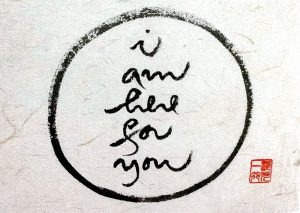 The Columbia City Yoga on-line Moving into Meditation class met this morning. We reflected on the vast web of inter-being of which we are a part. In today’s class we reflected on our power to feel, witness and to choose kindness.
The Columbia City Yoga on-line Moving into Meditation class met this morning. We reflected on the vast web of inter-being of which we are a part. In today’s class we reflected on our power to feel, witness and to choose kindness.
We considered the different ways we can support ourselves in claiming our power.
We drew on eco-philosopher Joanna Macy’s framework for responding to the environmental crisis. The framework and the excerpt from Rainer Maria Rilke’s Duino Elegies are drawn from the Tricycle Magazine article Rilke’s Book of Hours as Portent and Guide. The article describes four successive stages of social activism: “opening to gratitude, owning our pain for the world, seeing with new eyes, and going forth—that are predicated on the idea that in order to heal ourselves and our ecosystems first we must be willing to feel both suffering and joy.”
Our guided meditation was inspired by the meditation offered by Kaira Jewel Lingo’s Meditation on Loving Our Skin published in Tricycle Magazine.
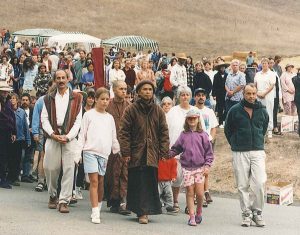 Suggestions for the specific ways we can support ourselves in feeling, witnessing and choosing kindness were inspired by Zenshin Florence Caplow’s Zenshin’s Ten Practices for Frightening Times.
Suggestions for the specific ways we can support ourselves in feeling, witnessing and choosing kindness were inspired by Zenshin Florence Caplow’s Zenshin’s Ten Practices for Frightening Times.
Guided Reflection
Welcome. In our last class we reflected on the web of inter-being. We talked about how witnessing and listening arouse deep caring and empathy. When we recognize our shared humanity we realize ourselves as pilgrims in the kinship of time. I associate the word “kinship” with the word “kind” and “kind” with cooperation.
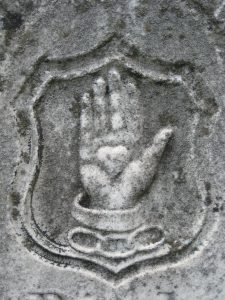 The word “kind” is one of the oldest in the English language, going back some time before the year 900. It originally meant “nature.” Kindness is natural, of nature. Thich Nhat Hanh, one of the greatest teachers on inter-being, encouraged all his students to show kindness, especially in the face of cruelty. When we show kindness we are grounded in nature. We are nature which encompasses all we can see and what we cannot see: the human and more than human.
The word “kind” is one of the oldest in the English language, going back some time before the year 900. It originally meant “nature.” Kindness is natural, of nature. Thich Nhat Hanh, one of the greatest teachers on inter-being, encouraged all his students to show kindness, especially in the face of cruelty. When we show kindness we are grounded in nature. We are nature which encompasses all we can see and what we cannot see: the human and more than human.
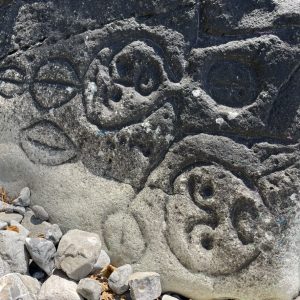 We are witnessing what eco-philosopher, Joanna Macy, calls The Great Unraveling: social and environmental unraveling. Our inter-dependent world seems to be coming apart. The cooperation that makes everything possible seems to be breaking down. Joanna also speaks of The Great Turning that is possible when we witness suffering and are moved to act. Witnessing, feeling and acting are transformative. They can create a shift in consciousness. This is a shift toward understanding and honoring inter-being and inter-dependence. This understanding is to be felt, sensed and understood with the body.
We are witnessing what eco-philosopher, Joanna Macy, calls The Great Unraveling: social and environmental unraveling. Our inter-dependent world seems to be coming apart. The cooperation that makes everything possible seems to be breaking down. Joanna also speaks of The Great Turning that is possible when we witness suffering and are moved to act. Witnessing, feeling and acting are transformative. They can create a shift in consciousness. This is a shift toward understanding and honoring inter-being and inter-dependence. This understanding is to be felt, sensed and understood with the body.
Joanna is a translator of Maria Rainer Rilke. He was an Austrian poet who lived between the 19th and 20th centuries. In his Duino Elegies he wrote about this embodied knowledge as a felt awareness of being part of Earth:
Each thing—
each stone, blossom, child—
is held in place.
Only we, in our arrogance,
push out beyond what we each belong to
for some empty freedom.
If we surrendered
to earth’s intelligence,
we could rise up rooted, like trees.
Instead we entangle ourselves
in knots of our own making
and struggle, lonely and confused.
So, like children, we begin again
to learn from the things,
because they are in God’s heart;
they have never left him.
This is what the things can teach us:
to fall,
patiently to trust our heaviness.
Even a bird has to do that
before he can fly.
(II, 16)
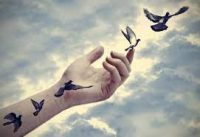 We are learning our place. We are falling. We can also choose to disentangle ourselves, to trust in Earth’s wisdom and to patiently trust the power we have. We have the power to feel, witness and to choose kindness. This might look like feeling what you feel and sharing those feelings. Observing a centering, grounding practice every day. Finding trustworthy news sources and titrating the way you take in the news. Being wary of certainty with compassionate skepticism. Resting and restoring body, heart and mind. Cultivating connection and love. Accepting and offering help. Consuming what nourishes body, heart and mind – letting in inspiration. Supporting the well-being of human and more than human kin. Connecting with deepest values and living from them.
We are learning our place. We are falling. We can also choose to disentangle ourselves, to trust in Earth’s wisdom and to patiently trust the power we have. We have the power to feel, witness and to choose kindness. This might look like feeling what you feel and sharing those feelings. Observing a centering, grounding practice every day. Finding trustworthy news sources and titrating the way you take in the news. Being wary of certainty with compassionate skepticism. Resting and restoring body, heart and mind. Cultivating connection and love. Accepting and offering help. Consuming what nourishes body, heart and mind – letting in inspiration. Supporting the well-being of human and more than human kin. Connecting with deepest values and living from them.
We can pause and ask ourselves: “What is the kind thing to do? “
We can choose kindness in our practice today. Let your body come to rest with kindness – lying down, reclining or sitting upright with support. You might take a few deep, slow breaths. Feeling the length of your spine as you inhale and relaxing your shoulders as you exhale. Let the chest gently expand and the belly soften as breathing comes to happen on its own. Notice if there is any holding or tension that you can release, especially as you breathe out.
Like each thing – each stone, blossom, child – let yourself be held in place.
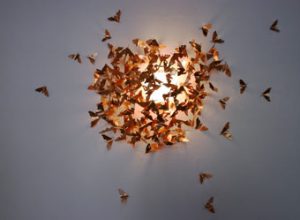 Attune to the in-breath and the out-breath, or you can bring awareness to body sensations. As you notice your mind moving to other places, other times, gently bring your awareness back to your experience in this moment, this breath or this body sensation.
Attune to the in-breath and the out-breath, or you can bring awareness to body sensations. As you notice your mind moving to other places, other times, gently bring your awareness back to your experience in this moment, this breath or this body sensation.
Breathing in, be aware of the whole body.
Breathing out, be aware of the whole body.
Breathing in, calm the body.
Breathing out, allow the body to rest.
Breathe and rest in this way a few times.
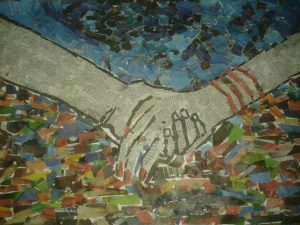 Let Body intelligence rise up rooted from Earth’s intelligence. Your body, Earth’s body exquisitely in form, place and time. Soft and hard, fragile and resilient, dry and moist, fertile and sparse, colorful and opaque, hot or cold: expressions of being alive.
Let Body intelligence rise up rooted from Earth’s intelligence. Your body, Earth’s body exquisitely in form, place and time. Soft and hard, fragile and resilient, dry and moist, fertile and sparse, colorful and opaque, hot or cold: expressions of being alive.
Notice the skin on your body. Bring a kind attention and curiosity to this layer of skin. Some parts have hair, some parts are bare. Some are softer, others rougher, like the soles of your feet and the skin of your elbows and knees.
Sense the skin that leads to the inner parts of your body, the inner parts of the eyelids; the skin of your nose that turns into the inside of your nostrils; the skin of your ears that turns into the inner ear; the skin on your lips that leads to the skin of the inside of your mouth.
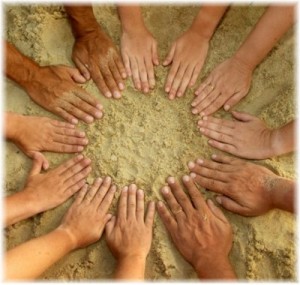 Visualize the different colors of skin, on the palms of your hands, the top of your hands. There may be places where the skin is looser, and more taut, smoother, or more wrinkled. Notice how your skin expresses your lived life. How your skin has protected you.
Visualize the different colors of skin, on the palms of your hands, the top of your hands. There may be places where the skin is looser, and more taut, smoother, or more wrinkled. Notice how your skin expresses your lived life. How your skin has protected you.
Appreciate skin’s intelligence; how it adapts and helps you communicate with the world around you. It helps you feel the temperature. In heat, it cools you by sweating. In cold, it activates your nervous system, to warm up through shivering and goose bumps, the hair raising to help preserve your warmth.
Appreciate its way of connecting to the world around you. It absorbs sunlight to make the Vitamin D that helps bones grow strong and regulate cells. Skin also knows how to heal: with scars, with scabs covering wounds, fighting infection. It is a wondrous organ, the largest organ of our body.
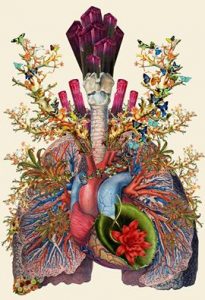 There is so much wisdom in this incredible organ that has gone through so many phases of life with you. It adapts and responds to every way you are in the world. Skin’s permeable membrane allows life affirming nutrients to move through you.
There is so much wisdom in this incredible organ that has gone through so many phases of life with you. It adapts and responds to every way you are in the world. Skin’s permeable membrane allows life affirming nutrients to move through you.
Skin’s touch receptors enable you to sense the joy of caressing a loved one, hugging a friend, stroking a pet’s fur, the softness of a rose petal and the cold and wet of snow crystals. You might place a hand on your skin. Take a moment to appreciate this skin so uniquely yours.
Like children, we begin again to learn from what we each belong to. We learn as we touch the world and are touched by the world.
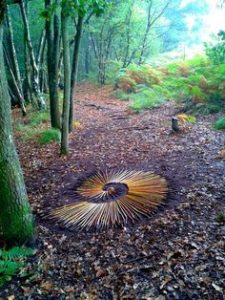 We can learn to patiently trust ourselves in the world through our circles of belonging. These circles that form a collective skin. They too allow life’s affirming experiences to move through us. They can help us to choose the kind thing. They too can offer us support so we can fall before we fly.
We can learn to patiently trust ourselves in the world through our circles of belonging. These circles that form a collective skin. They too allow life’s affirming experiences to move through us. They can help us to choose the kind thing. They too can offer us support so we can fall before we fly.
